In collaboration with CIPRA ITALY and the Italian Glaciologist Committee
From August 18 to September 9, the 5th edition of Caravan of Glaciers with an international scope kicks off: 6 stages on the Alpine glaciers of France, Valle D’Aosta, Piedmont, Lombardy, Friuli-Slovenia and Veneto
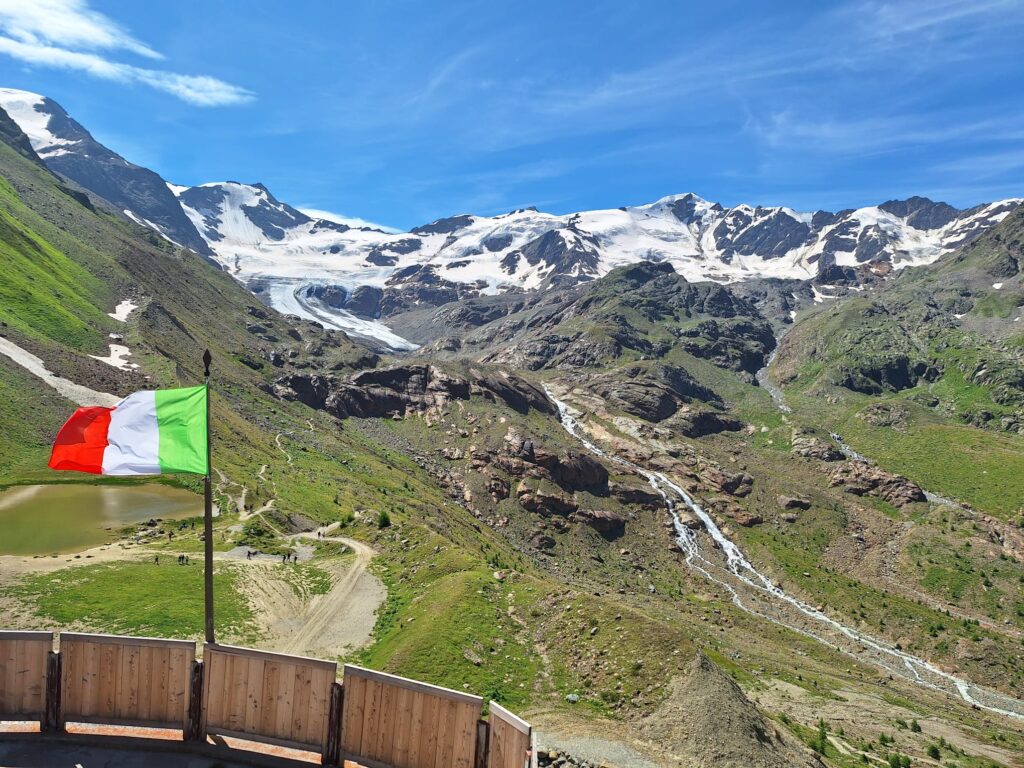
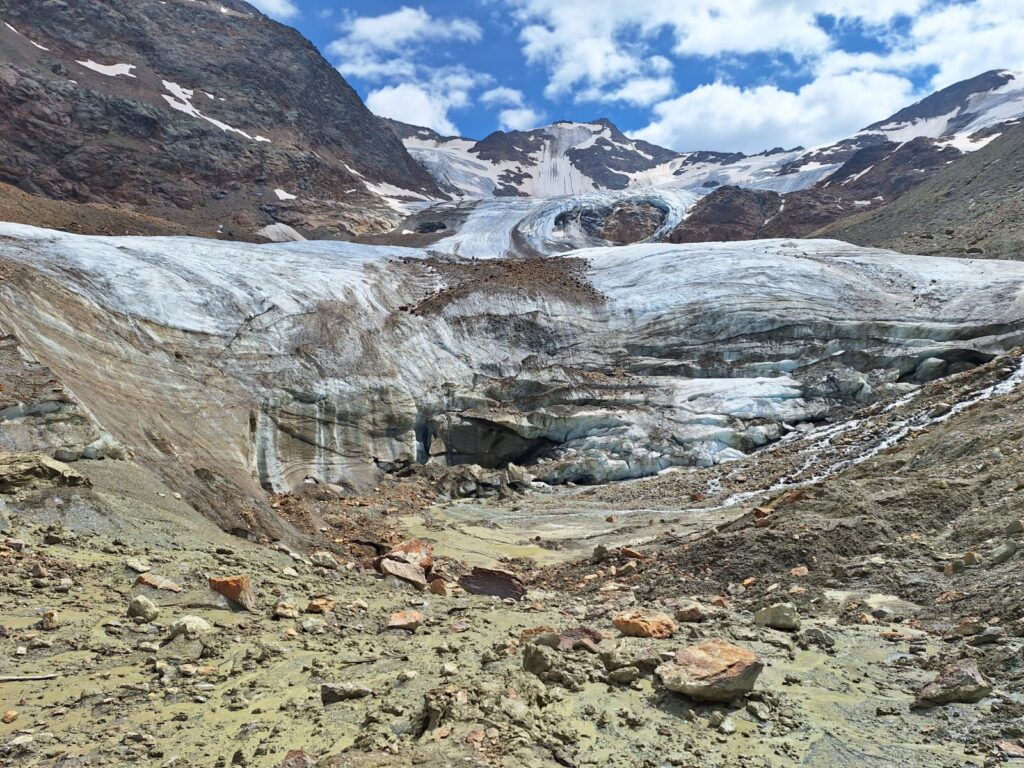
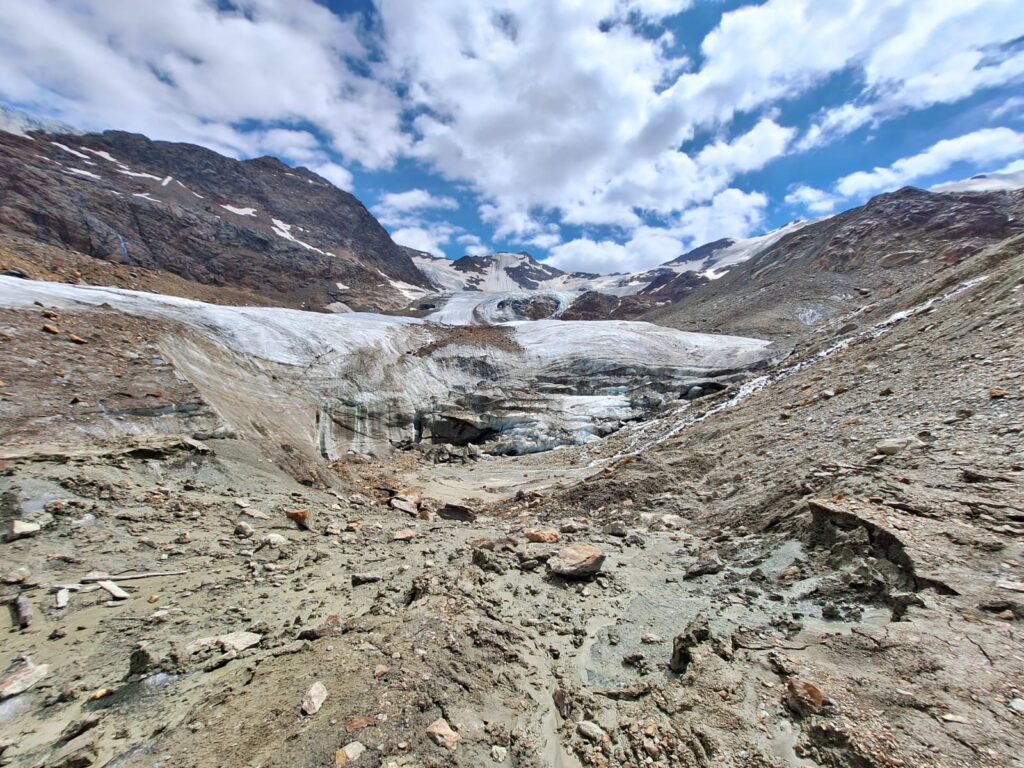
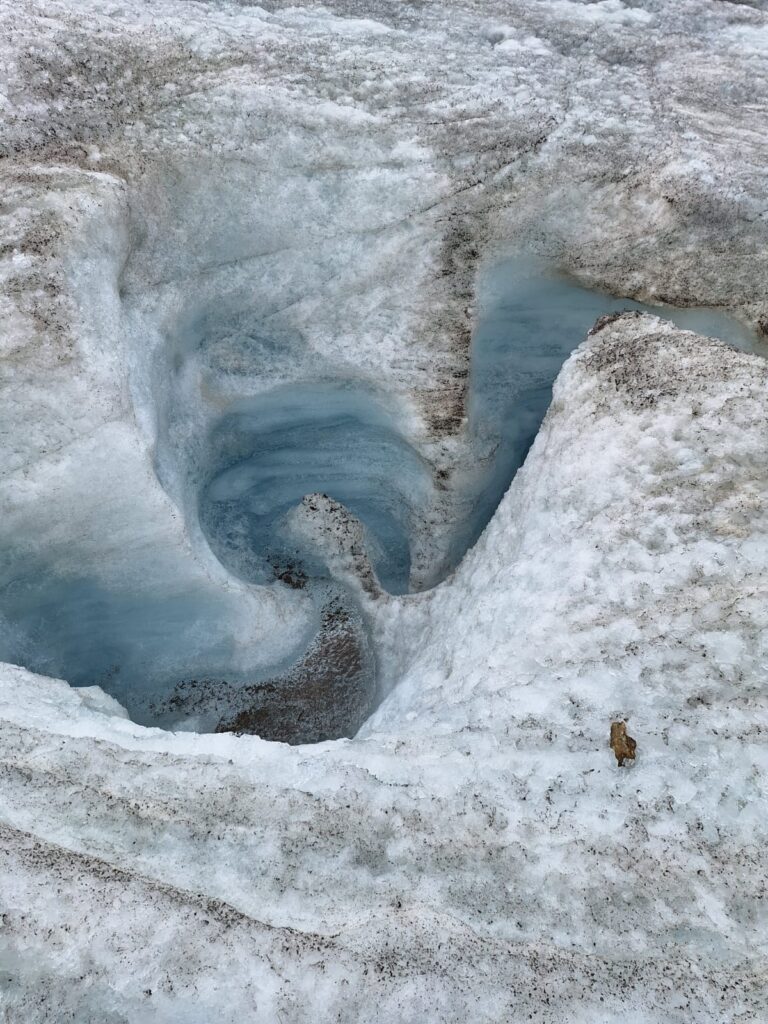

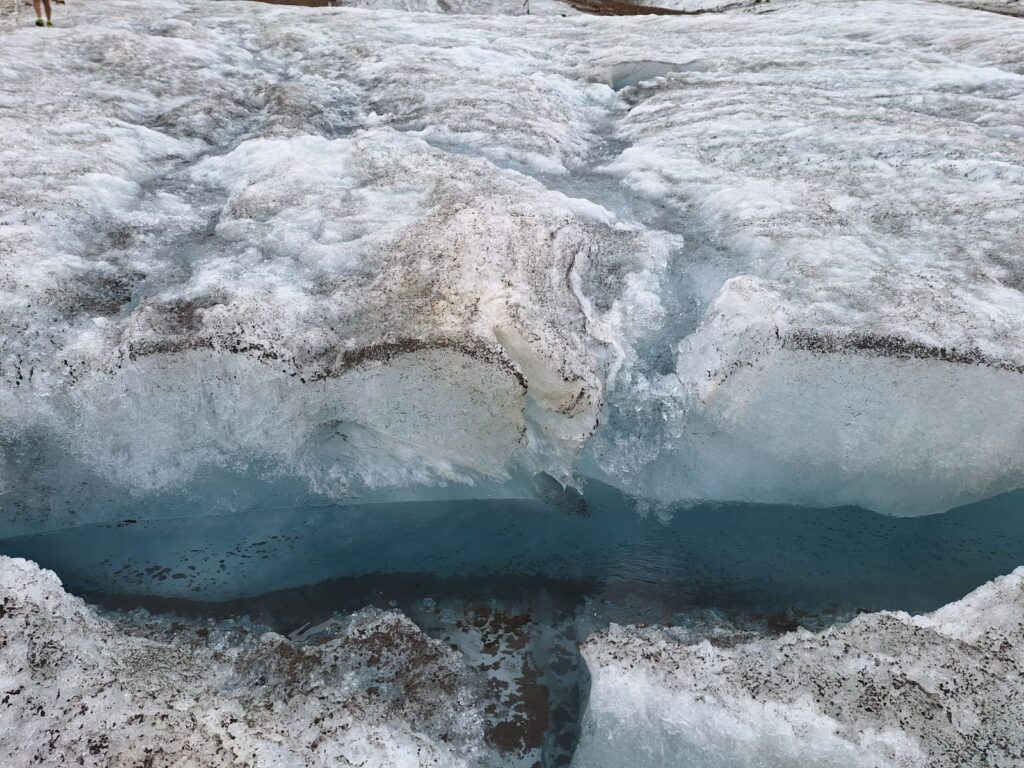
On the Forni glacier, the second largest in Italy, for a special stage together with ll’Università degli studi di Milano and as part of Clean Up the World.
New wake-up call: since mid-July on the glacier high melt rate ranging from 4 to 8 cm per day of melted ice at altitudes 2650 and 2600 m with a total loss of thickness approaching 2 meters in frontal areas.
War devices such as the one found in July are also coming back to light, but abandoned waste is also sometimes found on the trails, as revealed by yesterday’s Clean Up at Altitude day as part of Clean Up the World with about 150 pieces of waste collected and by the University of Milan’s monitoring done in recent years
289 those monitored from August 2021 to 2022 by the University of Milan on the trails approaching the Forni and Cedec glacier. 27 percent is food packaging, the waste most found, while 20 percent is cables, zip ties, bicycle parts, and pieces of wire
Legambiente: “Important to go to the mountains without leaving traces. We need more interventions and adaptation actions to counter the climate crisis and more information and awareness campaigns on the issue of waste at altitude.”



The climate crisis accelerates even at high altitudes.
A new warning signal comes from the Forni Glacier, the second-largest glacier in Italy, located in the heart of the Stelvio National Park in Lombardy. For almost a month, from the second week of July until today, with the arrival of the African anticyclone, the Forni Glacier has been melting day and night at a high rate of between 4 and 8 cm of ice melted per day at altitudes of 2,650 and 2,600 meters, with a total thickness loss in the frontal areas approaching 2 meters. The glacier’s ability to resist is being strained by the significant meteorological contrasts that have characterized 2024, including abundant and late snowfall in the Alps, high summer temperatures, and nighttime temperatures that, particularly on the Forni Glacier, have not dropped below zero since the second week of July.
Additionally, the front of the glacier is even more covered with debris and black carbon, resulting in a dark surface with a reflectivity of less than 15%. This is due to the effect of darkening, caused by atmospheric deposits and rockfalls. Moreover, the sediments collected at the front of the Forni Glacier still show high concentrations of lead, likely due to the large quantity of wartime debris present on the glacier. The significant melting of the glacier also uncovered an unexploded ordnance dating back to World War I in July, found at the base of the UNIMI ESP weather station. Besides wartime ordnance and other artifacts, there is also an issue of encountering abandoned waste from “yesterday and today” at higher altitudes, mostly macroplastics related to food packaging. This was highlighted both during the Clean Up Day conducted by Legambiente’s Caravan of Glaciers as part of the Clean Up the World initiative, during a preview on the Forni Glacier, and from the monitoring by the University of Milan carried out in August 2021 and 2022.
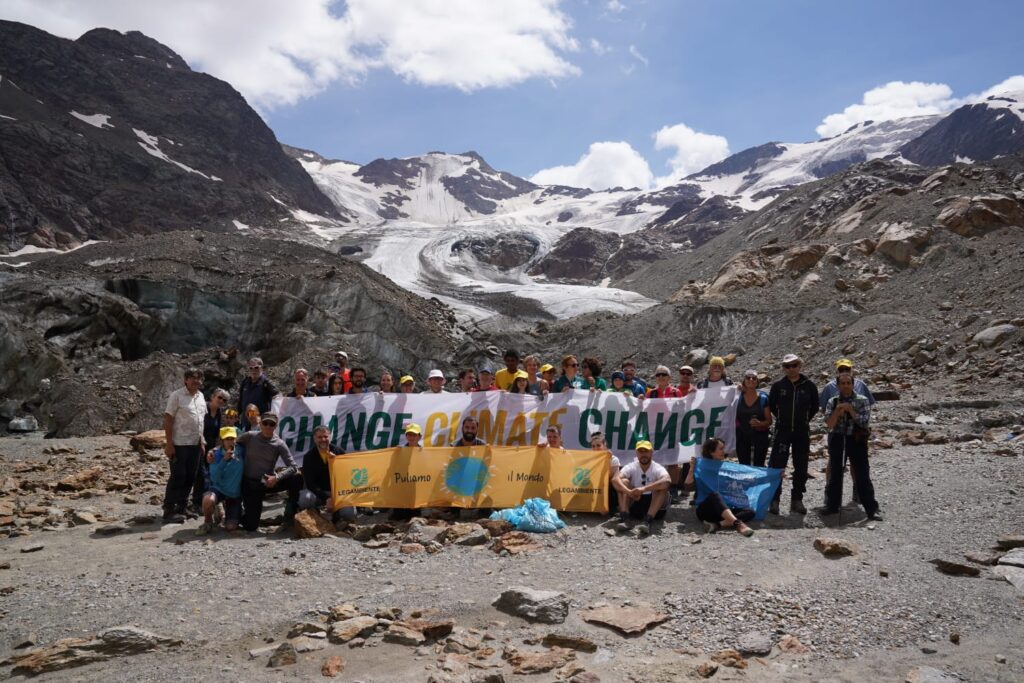
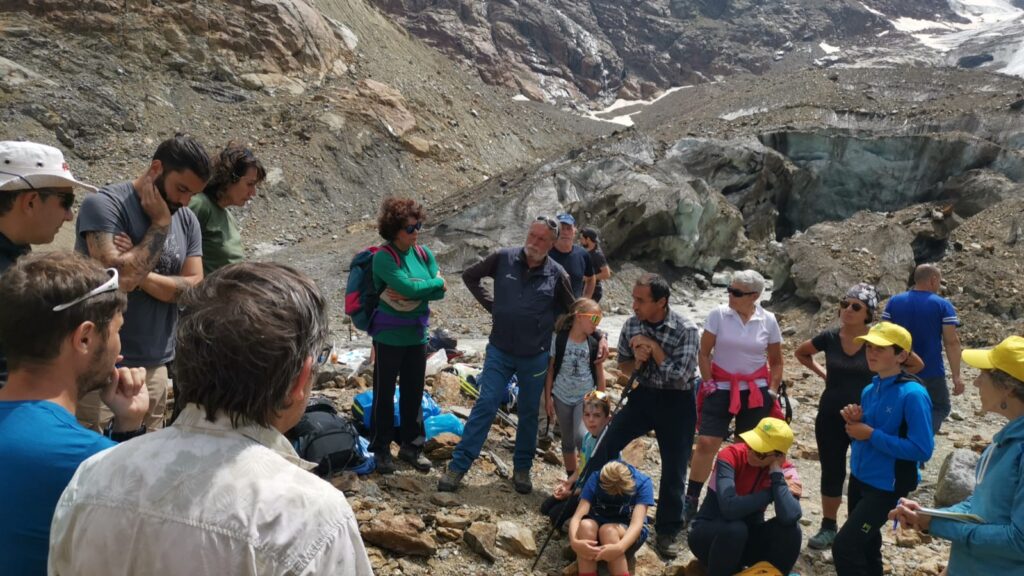

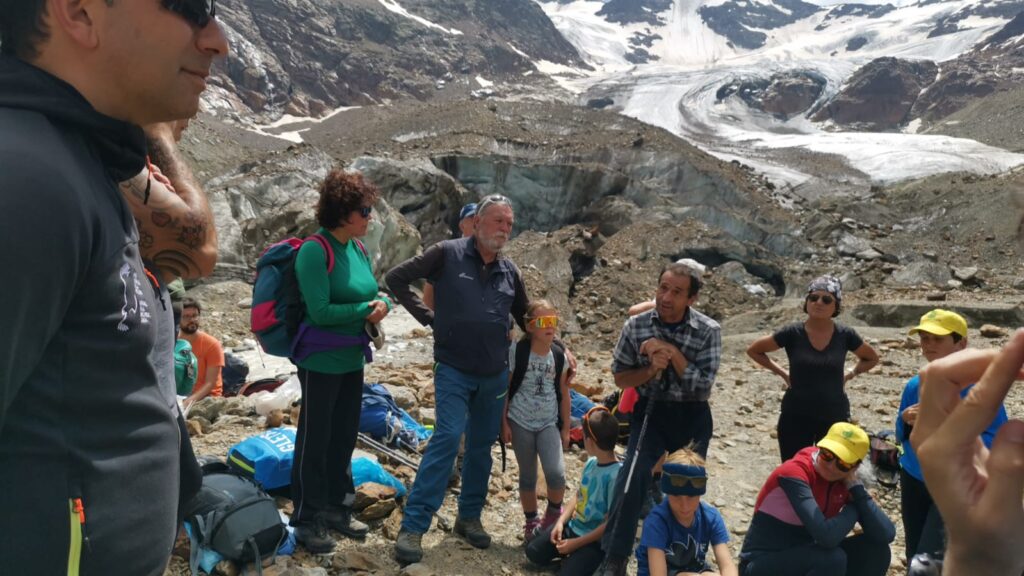
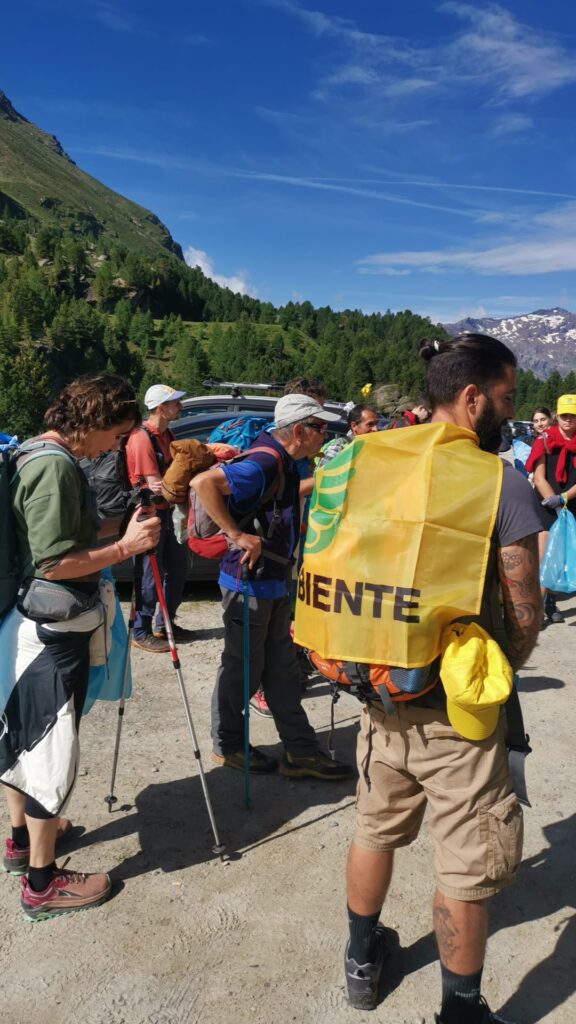

Caravan of Glaciers 2024
Legambiente’s Caravan of Glaciers 2024, an international campaign dedicated to monitoring the white giants in collaboration with CIPRA Italia and the scientific partnership of the Italian Glaciological Committee, supported by partners like FRoSTA, Sammontana, FPZ, technical partner Ephoto, and media partners La Nuova Ecologia and L’Altra Montagna, highlighted these issues. This year, the campaign, scheduled from August 18 to September 9, kicked off with a special preview right on the Forni Glacier, in the heart of Stelvio Park, together with the University of Milan and as part of Clean Up the World (Legambiente’s historical environmental volunteer campaign).
The preview event on August 5 aimed to emphasize both the issue of the climate crisis and the plight of the glaciers, thanks to the investigations conducted by Antonella Senese, a researcher at UNIMI ESP and a member of the Italian Glaciological Committee, Roberto Ambrosini, a professor at UNIMI ESP and a member of the Italian Glaciological Committee, Stefano Morosini, a professor at UNIBG and a historian of the PNS, and Claudio Smiraglia of the CIG, as well as a focus on high-altitude waste.
Clean up at high altitudes
During the high-altitude clean-up activity, conducted by Caravan of Glaciers and volunteers participating in the Clean Up the World initiative along the two trails leading to the Forni Glacier, about 150 pieces of waste were found, including paper tissues, plastic bottles, macroplastics related to food packaging, cigarettes, pieces of technical equipment, and even some metal pieces. In summary, waste of every kind and type. The most common items found were paper tissues and paper in general, followed by macroplastics from food packaging and cigarettes. At higher altitudes, it is worth noting that the melting glaciers are also revealing “waste from yesterday and traces of the past” related to the world conflicts fought at high altitudes, from wartime ordnance, like the one found in July, to everyday items used by soldiers of that era, such as a small pot found recently.
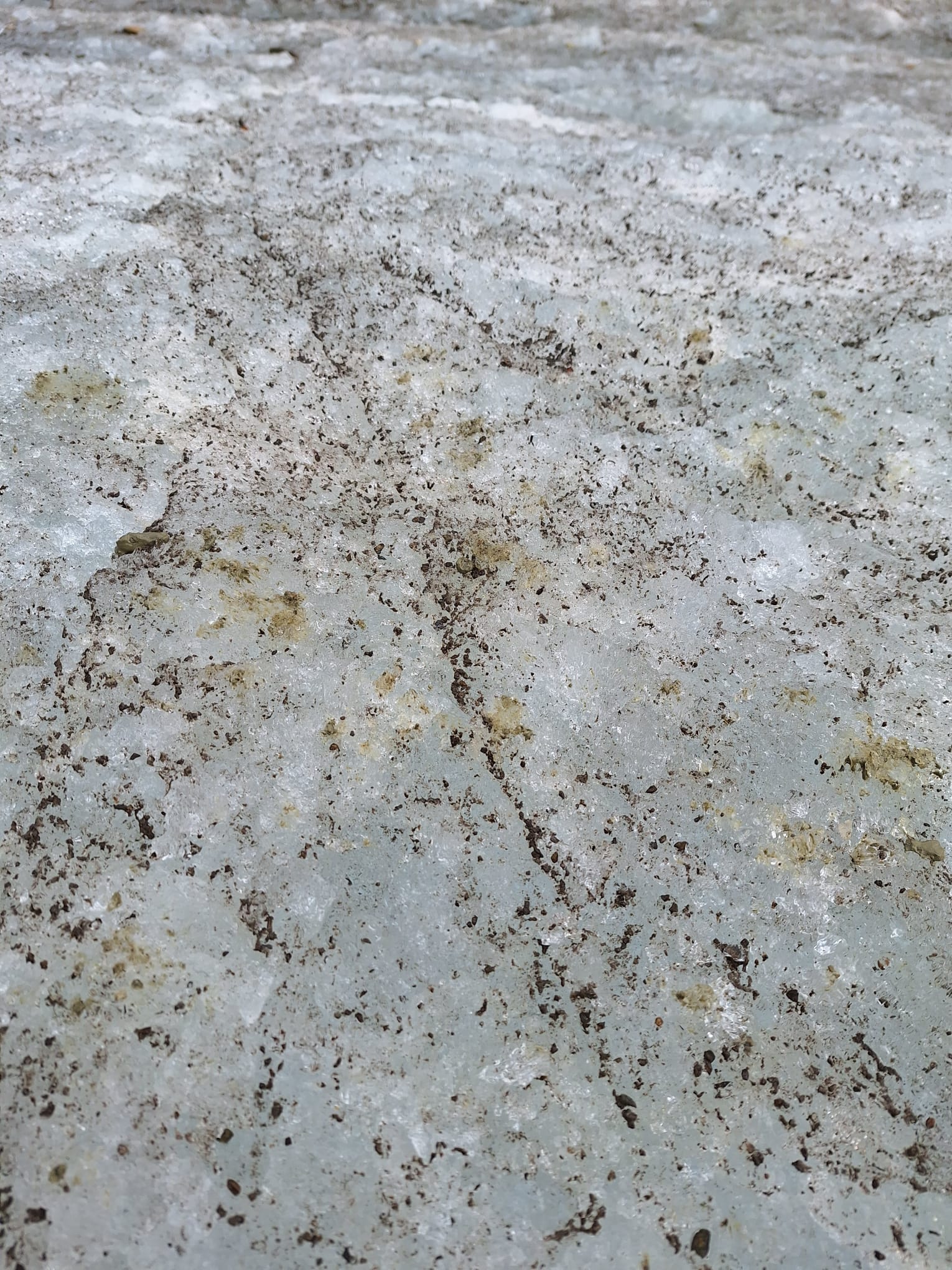
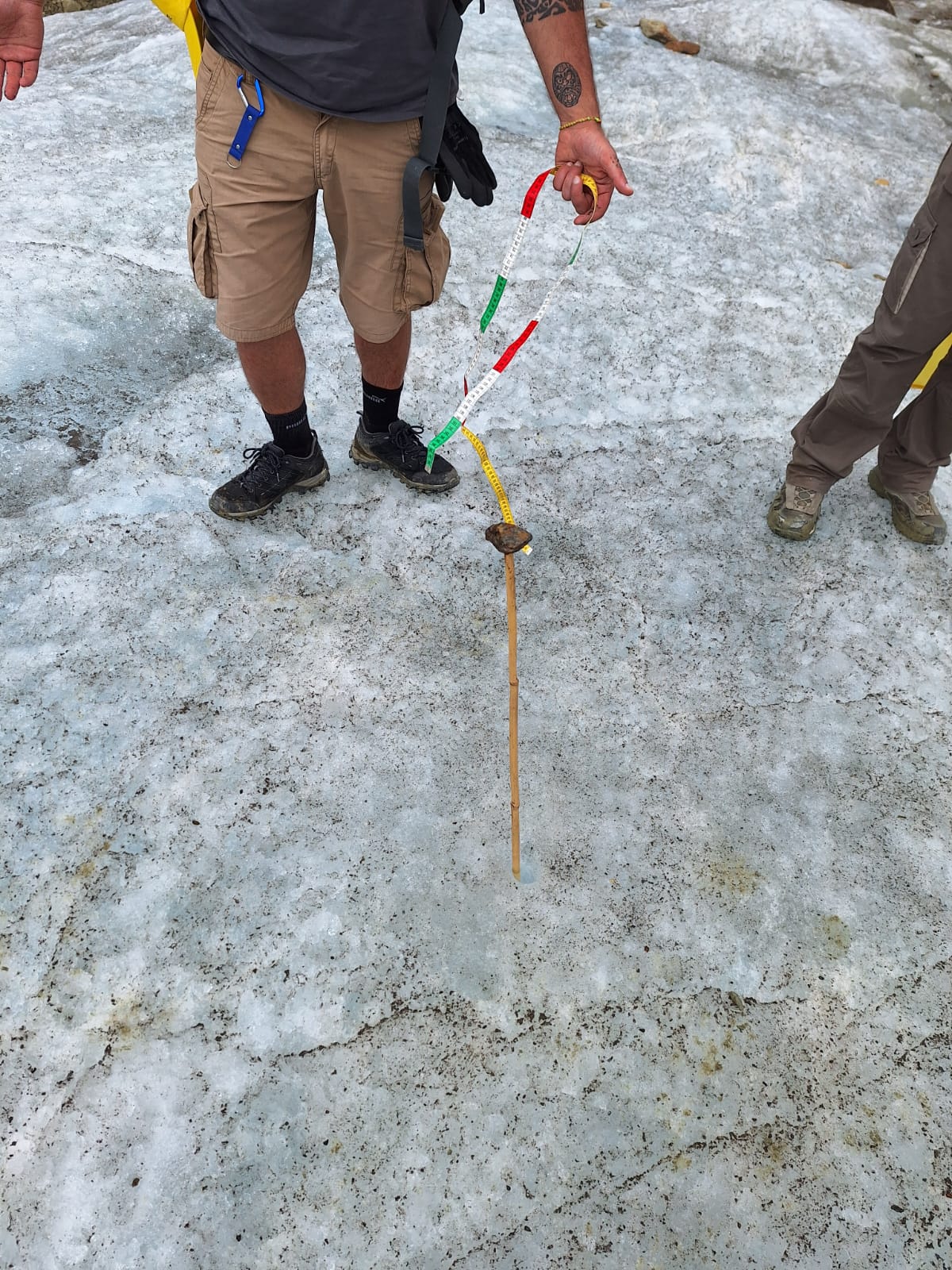
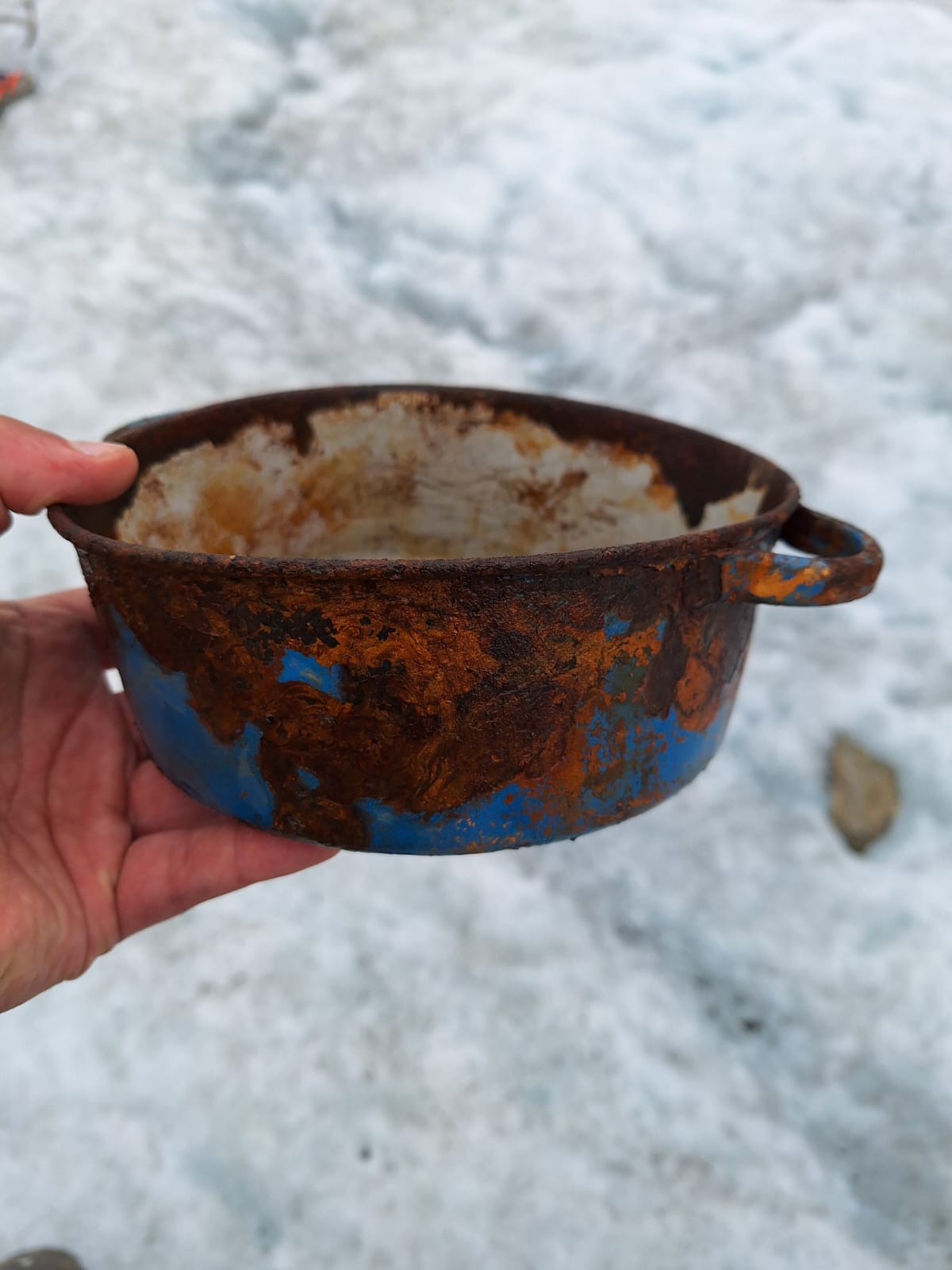

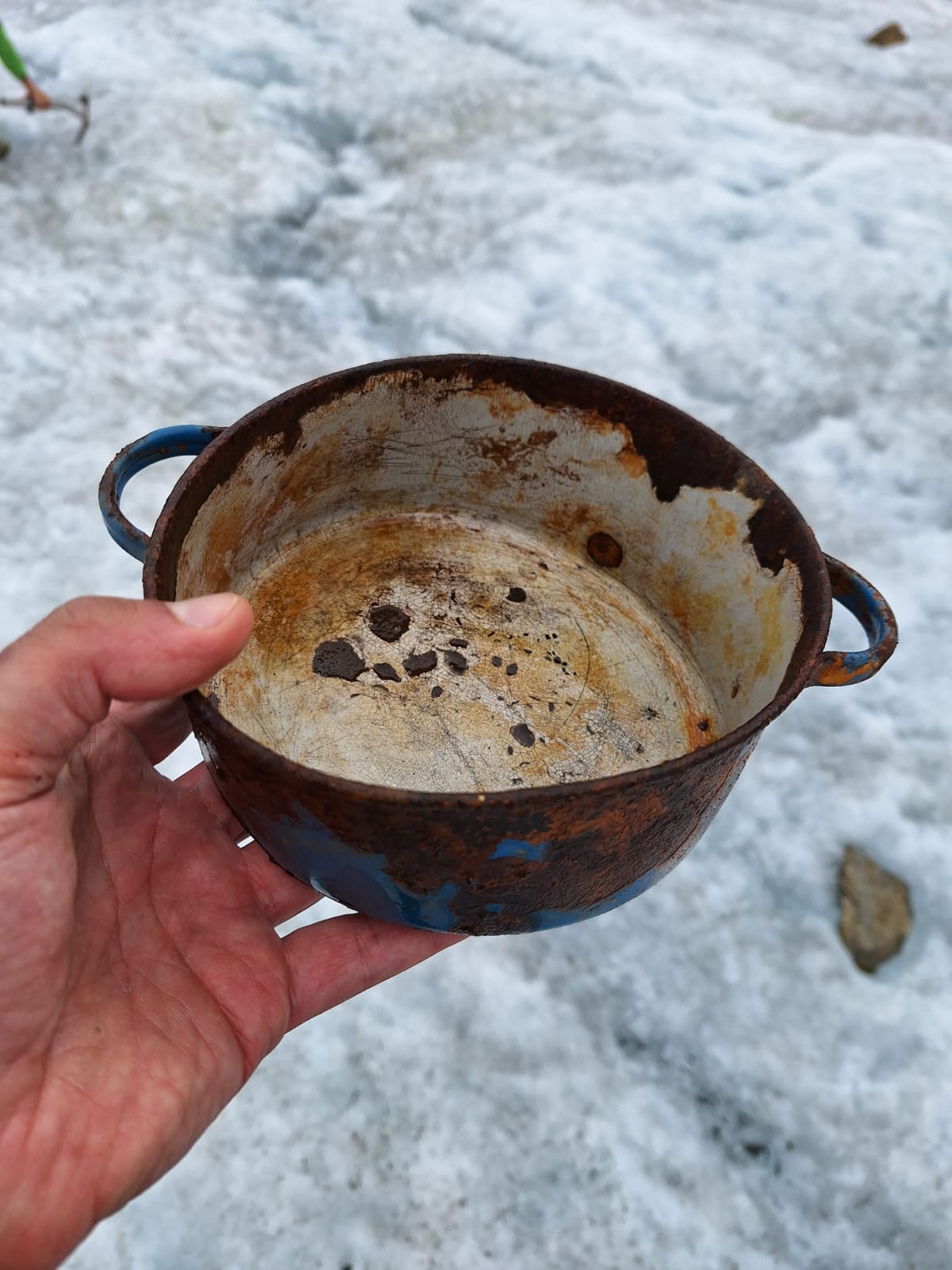
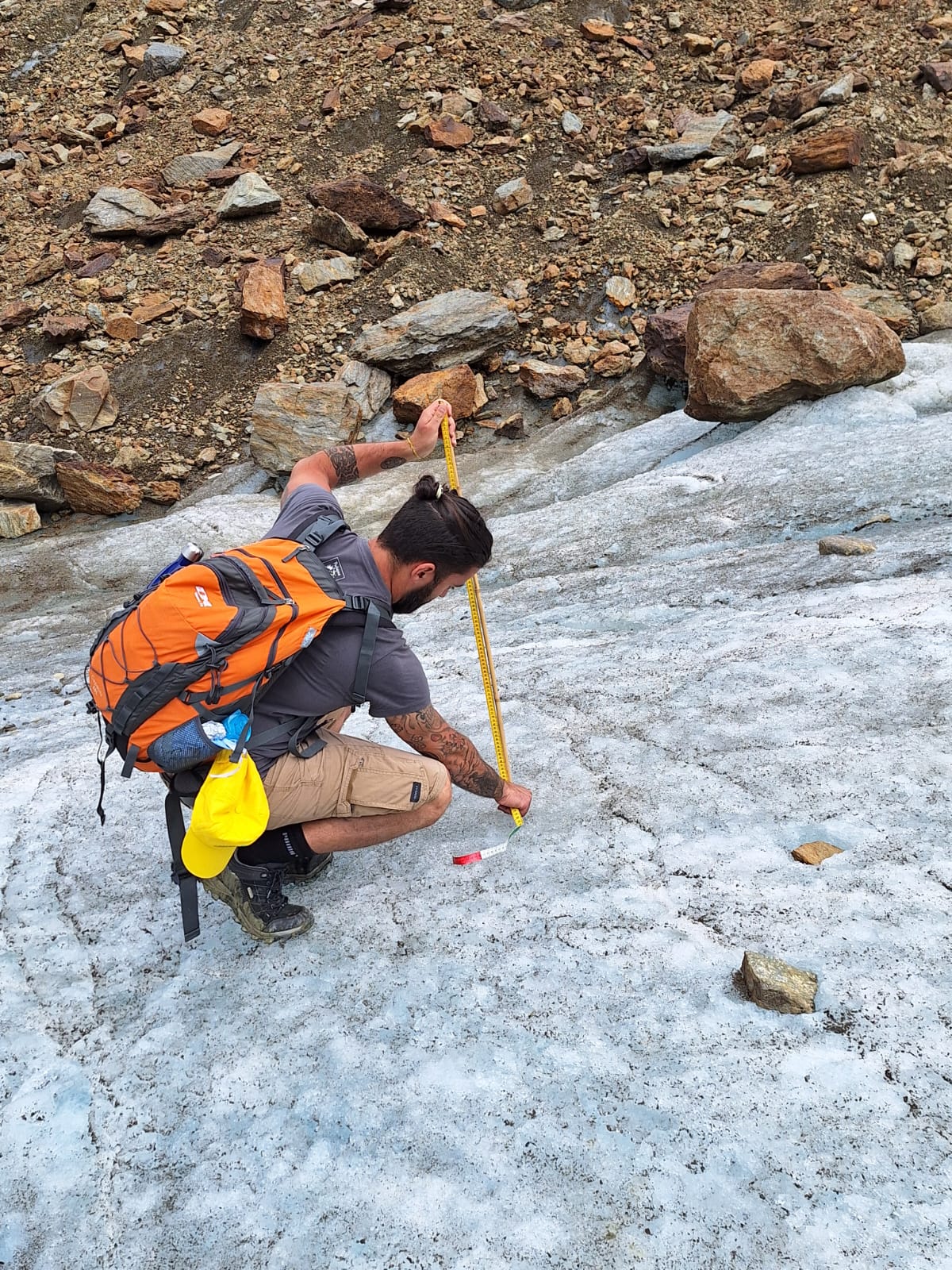
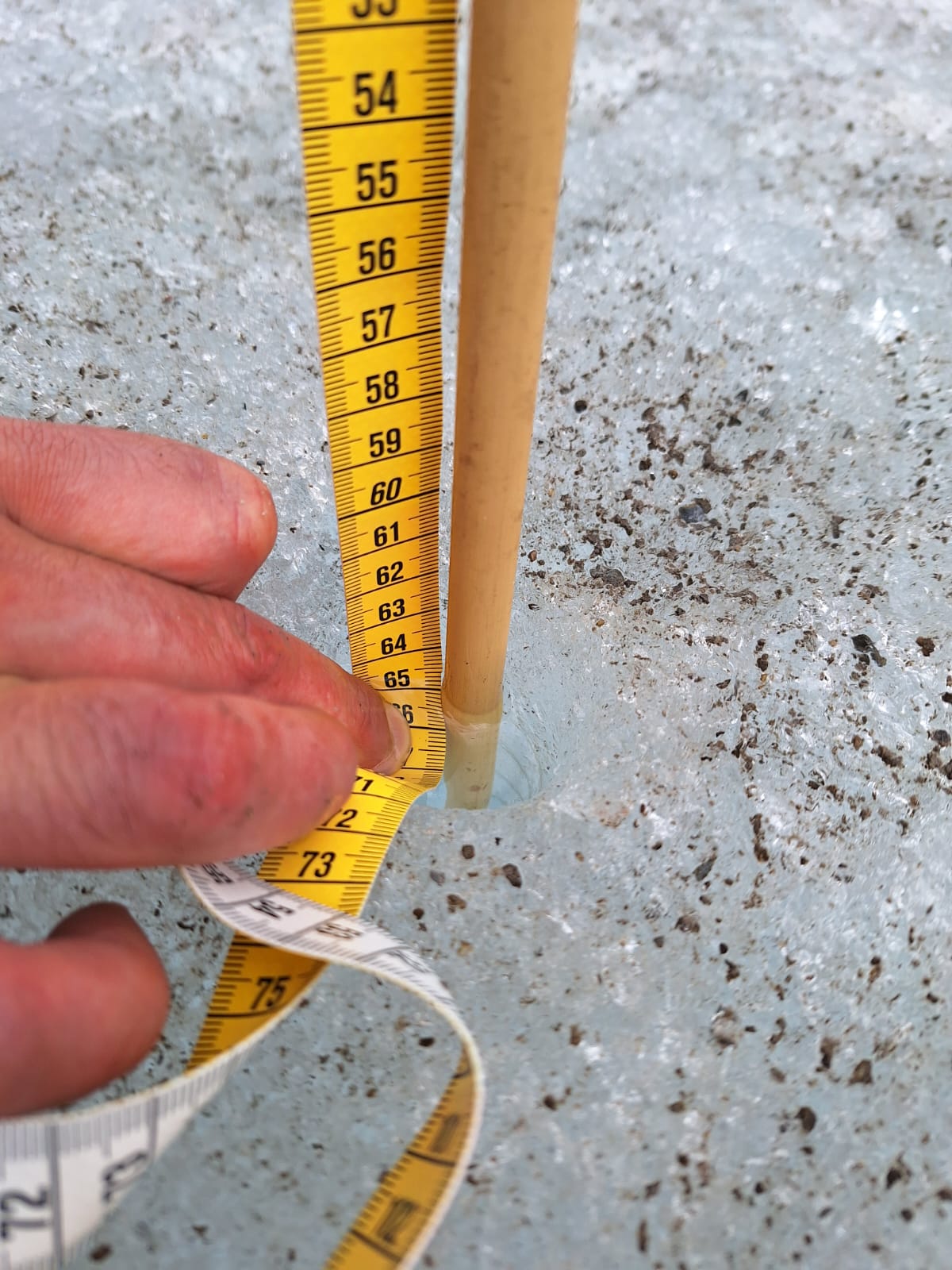
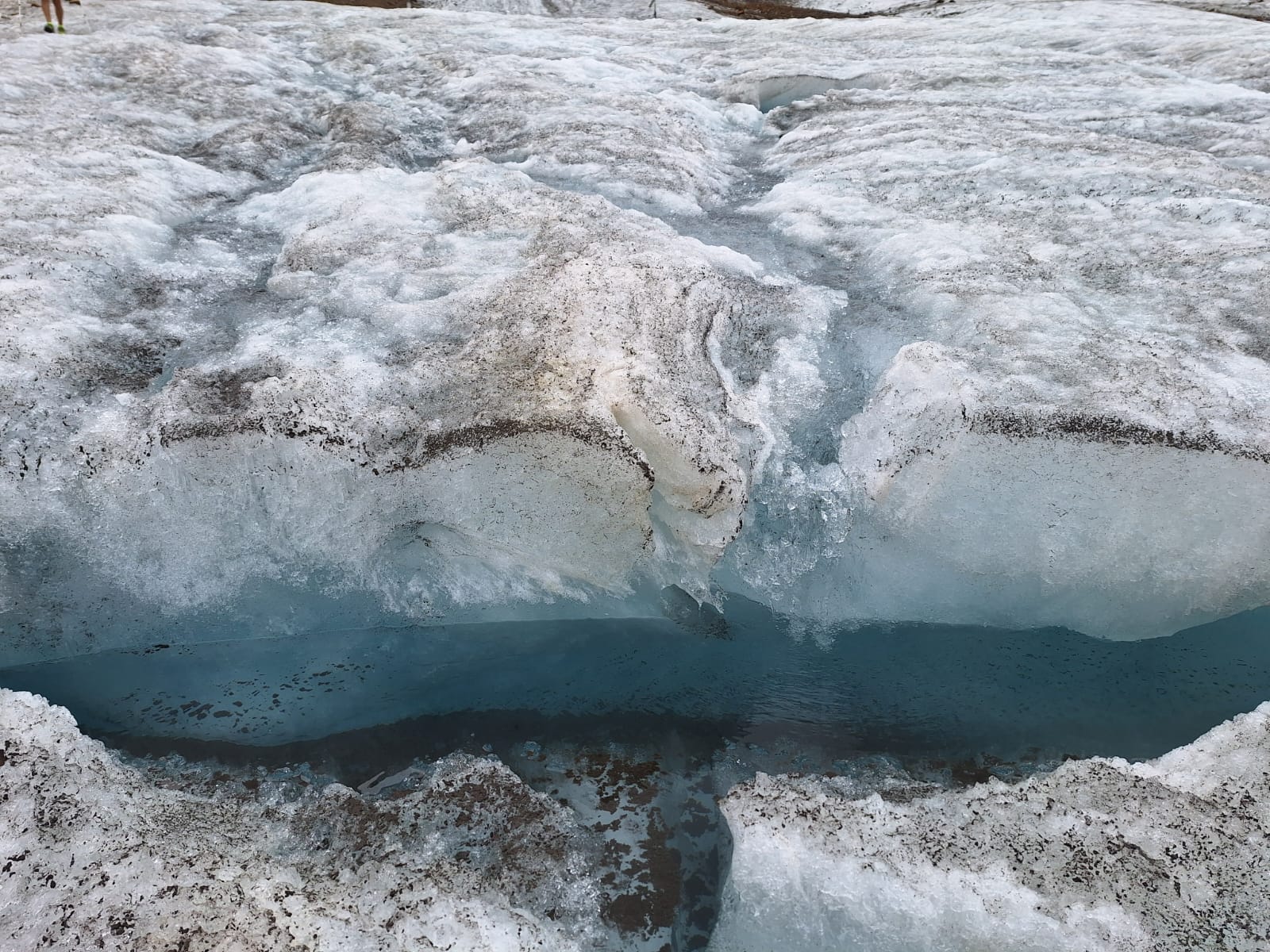
“With this preview of Caravan of Glaciers 2024, planned as part of Clean Up the World,” stated Giorgio Zampetti, General Director of Legambiente, and Vanda Bonardo, head of Legambiente’s Caravan of Glaciers campaign and President of CIPRA Italia, “we want to raise awareness about the issue of waste abandonment in the mountains, a bad habit that affects not only the Alps and the Apennines but also the world’s highest peaks, the eight-thousanders. In the mountains, one should walk without leaving traces behind, maintaining virtuous, sustainable, and responsible behaviors in every context, from mountainous to urban environments, as we emphasize every year with Clean Up the World, our environmental volunteer campaign that involves people in clean-up activities. This time we start right from the mountains, with a high-altitude clean-up activity, without forgetting that the other major threat is the advancing climate crisis, as evidenced by the data on the Forni Glacier, which we will discuss in the 2024 edition of Caravan of Glaciers, scheduled from August 18 to September 9 with six new stops.”
Waste monitoring study
In addition to the high-altitude clean-up activity, during the preview of Caravan of Glaciers 2024, waste monitoring results conducted since August 2021 and in 2022 were presented for the first time by Marco Parolini from the Department of Environmental Sciences and Policies at the University of Milan. A total of 289 pieces of waste were found at high altitudes along the approach trails to the Forni and Cedec glaciers, monitored since August 2021 and in 2022. These were mostly macro-plastics collected in eight transects along the route of four heavily frequented trails by tourists and four less frequented ones.
About 27% of the macroplastics collected were related to food packaging (such as candy and snack wrappers, beverage containers, or energy bar wrappers), 20% to cables, ties, bicycle parts, and wires, 6% to personal care and hygiene products like surgical masks or supplement pouches; 3% consisted of technical clothing items like labels and clothing fragments, 4% of technical equipment like fragments of soles or trekking pole tips. It was not possible to determine the origin of the remaining 40% of macroplastic fragments due to their wear and/or fragmentation and degradation from exposure to weather and mechanical phenomena. In summary, the polymer characterization highlighted that polyolefins, mainly polypropylene (PP) and polyethylene (PE), are the two polymers that most characterize the plastic waste collected along the trails.
The choice to conduct monitoring along these trails was not random. This study area is based on results obtained from a previous monitoring study conducted in 2020, which had already confirmed the presence of macroplastics on the surface of the Forni and Cedec Glaciers, as well as along the approach trails to these glacial ecosystems. These results suggest that the presence of macroplastics on the trails is mostly due to the deliberate or inadvertent abandonment of waste by hikers frequenting the mountains.
“The observations and research findings conducted by the University of Milan researchers,” stated Guglielmina Diolaiuti, UNIMI ESP professor and member of the Italian Glaciological Committee, “emphasize the importance of constantly monitoring glaciers, not only to better understand the ongoing climate dynamics but also to raise awareness of the urgency to reduce human impact on the environment. In particular, environmental contamination by polymer plastics, colloquially known as plastics, is one of the main issues that society faces today. When plastics are not properly managed and/or disposed of, they disperse and can cause significant impacts on ecosystems and the organisms that inhabit them. Only through a shared commitment and greater awareness can we hope to preserve these precious natural laboratories for future generations.”
Caravan of Glaciers 2024
After the preview on the Forni Glacier, Caravan of Glaciers 2024 will officially begin from August 18 to September 9. There are six scheduled stops in the Alps and beyond national borders. The journey will start in France with the Mer de Glace glacier, continue to Valle D’Aosta with the Valpelline glacier, to Piedmont with a stop at the Flua Glacier, in Lombardy on the Fellaria Glacier, in Friuli-Venezia-Giulia/Slovenia on the Julian Alps glaciers, and conclude in Veneto returning to the Marmolada Glacier.
As always, many themes will be highlighted: from the effects of the climate crisis and extreme weather events in the mountains to biodiversity protection, from policies for climate change adaptation to good practices for sustainable development, to a documentary on the plight of the Alpine glaciers, created by Caravan of Glaciers. There will be exceptional testimonials who will accompany the journey of Caravan of Glaciers. Among the first are journalist and writer Marco Albino Ferrari, geographer and former university professor Giuseppe Dematteis, writer Dacia Maraini, and mountaineer Agostino Da Polenza.

Luisa Calderaro 3496546593 capo ufficio stampa di Legambiente
Ilenia De Simone 371 5962334 addetta stampa
